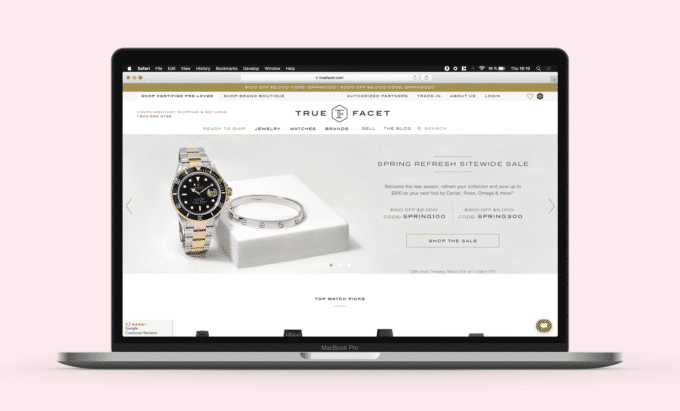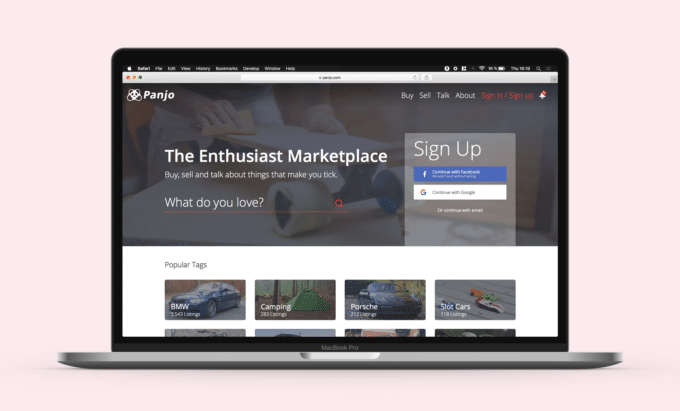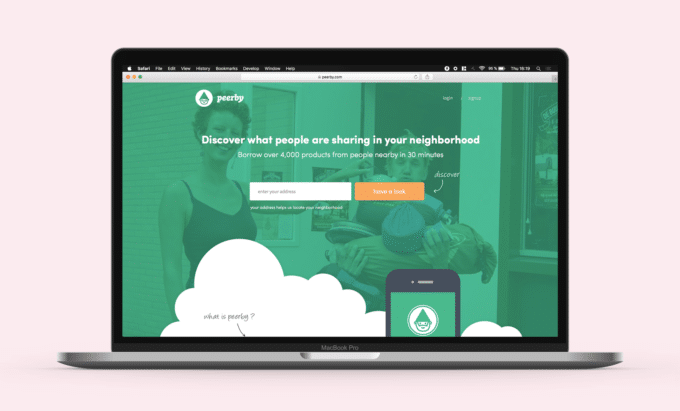Let’s learn how an online marketplace operates and generates revenue from its products and services.
eBay, the first company that launched a product-focused marketplace, was founded more than twenty years ago. Very soon, companies all over the world realized that marketplace businesses offer variety, choice, and flexibility to buyers, which substantially increased the number of websites of this type.
1. Understanding the various marketplace business models, including horizontal, vertical, global, B2B, B2BC, and B2C, is crucial for businesses looking to establish a successful online marketplace.
2. Finding the best model for a digital entrepreneur means considering such factors as the target market, product type, revenue potential, competitive landscape, scalability and the level of control and involvement.
3. Some common monetization approaches for marketplace platforms include transaction fees, subscription models, and listing fees. By carefully selecting and implementing the right monetization model, marketplace platforms can create sustainable revenue streams while providing value to both buyers and sellers.
What is a Marketplace Business Model?
A marketplace is a type of eCommerce website, where buyers can purchase goods from multiple sellers. The marketplace owner acts as a middleman, showcasing products sold by different companies on the platform and attracts buyers.
The main advantage of the marketplace business model for end customers is that they can compare prices for the same product from different suppliers and make a reasoned choice. Unlike brick and mortar stores, a marketplace can unite a hundred of sellers on a single platform.
Types of Marketplaces
Basically, there may be three types of marketplaces:
- Horizontal Marketplaces: Offer a wide range of goods within a specific category, such as Amazon.
- Vertical Marketplaces: Specialize in a specific industry or niche, like Etsy for handmade goods.
- Global marketplaces: Platforms or environments where buyers and sellers from around the world can engage in trade and commerce. These marketplaces can exist in various forms, including physical locations, online platforms, or a combination of both. They provide a space for businesses and individuals to buy and sell goods and services on a global scale, often facilitating transactions, logistics, and payments across international borders.
Let’s explore the basic models.
Vertical marketplaces

A vertical marketplace sells products from different sellers, but of the same category.
For example, TrueFacet offers only jewelry and designer watches. The site guarantees the authenticity of all their items, which is extremely important, considering the prices.
Horizontal marketplaces

A horizontal marketplace sells products of different categories, but with a unifying feature.
Panjo.com falls into this type. It’s an enthusiast marketplace, where people sell and buy recreational products — from rare comic books to spare parts for sports cars. Panjo connects enthusiasts, hobbyists, and collectors in finding information and sharing expertise.
Another example of a horizontal marketplace is doteshopping.com. Dote offers buyers an all-in-one marketplace with famous brands like Forever 21, Topshop, and Zara, which solves the problem with downloading and installing tens of mobile apps from different retailers.
Examples of horizontal marketplaces: Etsy (gift shop) and Otto (clothes).
Global marketplaces
A global marketplace sells products across all categories. An advantage of such marketplaces is in the huge variety of merchandise. At the Shoptalk conference, Bob Kupbens, eBay’s Vice President of Business-to-Consumer Selling, explained that marketplaces have self-regulation of pricing policies due to the competition among sellers.
Everyone knows online marketplaces like Amazon, AliExpress, Taobao, Flipkart, and a lot more.
Find more details in our Horizontal Vs Vertical Marketplace: Unveiling The Key Differences blog post.

Need expert advice on marketplace launch?
Send a request to get a free quote for eCommerce development!
Most Popular Marketplace Monetization Models
How do marketplaces make money? Some of the most popular monetization models on a marketplace are:
- Commission-Based Model: The platform takes a percentage of each sale.
- Subscription Model: Vendors pay a recurring fee to list their offerings.
- Lead Generation Model: Vendors pay to access customer leads generated by the platform.
This list is not comprehensive. Below, we give you some more marketplace financial models and tips on how to use them.
Transaction fee


This marketplace model is one of the most popular ways to monetize. It’s the fairest monetization model for suppliers, as they only pay a fee if and when they sell something. The benefit for the marketplace is that it takes a cut of each transaction generated through the platform.
The challenge is to provide buyers with high-quality products or services, and guarantee suppliers a constant flow of buyers, otherwise both will find a bypass not to pay a commission to the marketplace.
Examples of marketplaces that operate on the commission-based approach: Airbnb, eBay, Fiverr, and Uber.
Subscription fee


The main advantage for sellers in this marketplace business model is that the marketplace helps attract new buyers. In turn, buyers get access to a limited resource for a considerable fee. This approach will work if the value proposition is very strong to entice consumers to pay a subscription in order to buy something.
A weak point of this business model is gaining and retaining customers. You may need several email funnels or lots of advertising on social networks to convey the value of the marketplace to customers and encourage them to get a subscription.
Examples of C2C marketplaces that work on subscriptions are Love Home Swap, a home switch site, and OkCupid and Tinder, dating sites. Resources like these usually identify customer preferences to offer personalized services, thus justifying the subscription fee.
As for the B2C segment, the subscription-based model is frequently used on hiring resources. For example, StackOverflow Careers set a fee for companies to access the candidate base. Studiotime is an online community to search and rent music studios, which is another example of a niche, where this model can work.
Listing fee
This business model is similar to the way paid advertising works—a marketplace also provides sellers with an audience and guarantees views for their listings. A listing fee is beneficial for both the marketplace and the seller—the marketplace gets profit from the cost of listings, and the seller profits from the quantity of listings submitted to the site.
Lead fee
Lead fee is the model in between listing and commission fee. In this model, customers will post a request, interested providers will pay to bid for that request. This model is more profitable for providers, as they pay only when they connect with the potential customer.
The lead fee model only works its best when the probability of getting new customers is high for sellers. This model is rarely found in the C2C segmentation, it is more often used on B2C and B2B sites. Providers primarily rely on the fact that one request can result in long-term cooperation.
Examples: YouDo, GetBlogger.
Freemium



A Dutch startup Peerby is a good example of marketplace monetization, where people can borrow household items or lend them to others. The core service on the marketplace is offered for free, however, users can upgrade to premium accounts.
Peerby offers two main paid-for services through its platform. First, owners can ask for insurance on items they lend through the site. Second, a new owner can order delivery of an item instead of picking it up from the previous owner.
The challenge of this model is to ensure that premium features are really valuable. If only one percent of all the users have premium accounts, and the rest users get by with the free version, you need to change something in the business model.
Featured listings and ads


Ad based business model means that all advertising on the site is free, providers pay in order to get more visibility for their listings. For example, providers pay to have their listings featured on the main page or at the top of the page.
In order to make this model work profitably, high traffic to the site is of utmost importance, which is the main challenge of this monetization model. Moreover, users may get annoyed by the ads.
All business models based on paid ads work best in narrow niches, where sellers are able to personalize their content.
An example here would be Häätori, a Finnish service, where users sell pre-owned wedding dresses. It has the following working business model: individuals can list their dresses on the site for free, but professionals who want to advertise their services (from photography to wedding planning) need to pay. The advertising content co-mingles with user-created content and does not cause irritation.
A marketplace normally combines the main model with additional ones. For example, Etsy operates on the commission-based model and also requires payment for normal listings, featured listings and ads, showcasing diverse marketplace pricing models.
Read more: How To Build an eCommerce Website like Amazon? Business Models and Key Features
B2B, B2C and B2B2C marketplace models
Marketplace business models are based on customer-vendor relationships. There may the following main business types:
- B2B (Business-to-Business):
B2B refers to two-sided marketplace business models that sell goods or services to other businesses. In this model, the customers are other businesses or organizations, and the vendors are also businesses. Examples include companies that provide software solutions, office supplies, or wholesale goods to other businesses.
- B2C (Business-to-Consumer):
B2C involves online marketplace business models selling goods or services directly to consumers. In this model, the customers are individual consumers, and the vendors are businesses. Examples include retail stores, online shopping platforms, and service providers catering to individual customers.
- B2B2C (Business-to-Business-to-Consumer):
B2B2C combines elements of both B2B and B2C models, where a business sells its goods or services to other businesses, which in turn sell to consumers. In this model, the primary vendor is a business selling to another business, and the secondary vendors are those businesses selling to consumers. An example could be a manufacturer selling products to a retailer, who then sells those products to individual customers.
In summary, B2B focuses on business-to-business transactions, B2C focuses on business-to-consumer transactions, and B2B2C involves a combination where a business sells to another business, which then sells to consumers. Each model has its unique customer-vendor dynamics and requires tailored strategies to effectively cater to the needs of the involved parties.
Get more details from our articles:
How to Choose the Correct Marketplace Business Model
Consider factors such as the target market, product type, and the level of control and involvement you want in the sales process. Let’s see them in more detail:
- Target Market: Understand the needs and preferences of your target audience. Some business models may be more appealing to certain demographics or industries.
For example, the target market for a global B2B model comprises multinational corporations, exporters, importers, and cross-border service providers engaged in international trade and commerce. This includes businesses participating in global supply chains, international eCommerce players, and global financial institutions offering cross-border financial services. These entities seek B2B solutions and partnerships that can facilitate their global operations, address cross-border trade complexities, and provide expertise in international business operations. The target market is characterized by the need for solutions to navigate international regulations, currency exchange, cultural differences, and diverse market dynamics. Businesses in this target market require B2B partners with global reach, cross-border capabilities, and specialized knowledge in global trade to support their international expansion and trade activities.
- Product Type: The nature of the inventory being offered can influence the suitability of different marketplace models.
For example, high-value or specialized products may be better suited to a commission-based model, while a subscription model might work well for recurring services.
- Control and Involvement: Consider how much control and involvement you want in the sales process. Some models offer more control over pricing, branding, and customer interactions, while others provide a more hands-off approach.
For example, in a vertical B2B model, the business owner focuses on serving a specific industry or niche market, allowing for a deeper control over the industry’s unique needs, challenges, and opportunities. By specializing in a particular vertical market, the business owner can develop a more in-depth knowledge of the industry’s dynamics, trends, and competitive landscape. This allows for the customization of offerings to better address the industry’s pain points and deliver more targeted and effective solutions.
- Competitive Landscape: Analyze the competitive landscape to understand how other marketplaces are operating and which models are proving successful in your industry.
In a horizontal B2B model, the potential customer base is vast and diverse, encompassing businesses across different industries and sectors. This diversity creates a highly competitive environment where companies must continuously innovate, refine their offerings, and differentiate themselves to stand out amidst a multitude of competitors. Conversely, in a vertical B2B model, where businesses focus on serving a specific industry or niche market, the competitive landscape may be less crowded and intense. By specializing in a particular vertical, companies can carve out a unique position, develop industry-specific expertise, and build strong relationships within the targeted market.
- eCommerce Revenue Model: Evaluate the revenue potential of each model based on factors such as transaction volume, commission rates, and subscription fees.
The revenue potential is likely to be higher in the horizontal B2B and global B2B models. Horizontal B2B models, serving a broad range of industries, can generate higher transaction volumes and command competitive commission rates due to their extensive market reach. Global B2B models, operating on an international scale, have the potential to facilitate larger transaction volumes and attract customers for subscription-based services, contributing to increased revenue potential. In contrast, while vertical B2B models excel in delivering specialized offerings, their revenue potential in terms of transaction volume and commission rates may be comparatively lower due to their focused industry or niche market approach. Additionally, the implementation of a marketplace revenue model can further enhance revenue streams by providing a platform for transactions and charging fees or commissions for facilitating exchanges between buyers and sellers.
- Scalability: Consider the scalability of each model and how it aligns with your long-term growth plans for the marketplace.
If the marketplace aims to establish a strong global presence and capitalize on opportunities in diverse markets, the scalability of the global B2B model aligns with these growth objectives. Similarly, the horizontal model allows for broad market reach and the potential to serve a wide range of businesses, supporting the marketplace’s goal of capturing a larger share of the B2B market and diversifying its customer base.
By carefully assessing these factors, you can choose the marketplace business model that best aligns with your business goals, target market, and the nature of the product base you aim to offer.
Conclusion
In the ever-changing landscape of entrepreneurship and commerce, the ability to strategically design, implement, and evolve your business model is a defining factor in your organization’s ability to thrive. As you embark on your business model journey, remember that the most effective models are not just about generating revenue; they are about creating enduring value for your customers and your business.
FAQs About Marketplace Business Model
What are the benefits of a well-defined business model?
A well-defined business model can lead to improved operational efficiency, enhanced strategic planning, clearer communication of value to stakeholders, and increased potential for sustainable growth.
How can I adapt my business model to changing market conditions?
To adapt to changing market conditions, businesses can consider diversifying revenue streams, adjusting pricing strategies, embracing new technologies, and staying attuned to evolving customer needs.
How should I market my marketplace on the Internet?
Marketing a marketplace means creating engaging content, leveraging influencer marketing, running targeted ads, engaging with the community, utilizing hashtags and trending topics, offering exclusive promotions, and tailoring the approach to different social media platforms.
What is the difference between retail and marketplace models?
In a retail model, the company sells its own products, while in a marketplace model, the platform facilitates sales between third-party vendors and customers. For example, the real estate retail model may involve individual real estate agents or agencies representing and selling properties to clients, while the real estate marketplace model operates as an online platform connecting buyers, sellers, and agents, facilitating property transactions and offering a broader range of properties and services.

